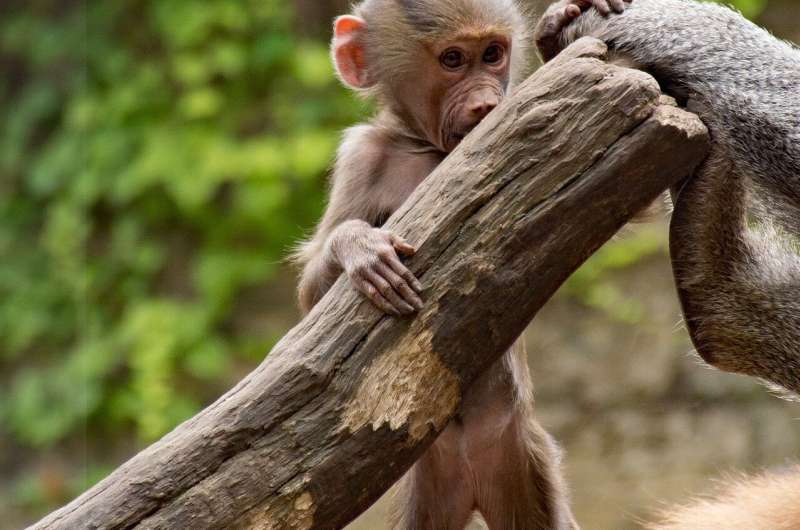Genetic change in our ancestors may partly explain why humans don't have tails like apes, according to a new study by researchers at NYU Grossman School of Medicine.
Published online on February 28 as a cover story for the journal Nature, the work compared the DNA of tailless apes and humans with that of tailed apes, finding a DNA insertion shared by apes and humans but absent in apes.
When the team engineered a series of mice to examine whether introducing a gene called TBXT affects their tails, they found a variety of effects on their tails, including some mice that were born without tails.
“Our study begins to explain how evolution removed our tails, a question that has interested me since I was young,” says the study author.
More than 100 genes have been linked by previous work to the development of tails in many vertebrate species, and the study authors hypothesized that tail loss occurred through changes in the DNA code (mutations) of one or more of them.
Notably, say the study authors, the new study found that the differences in tails did not come from TBXT mutations, but rather from inserting a piece of DNA called AluY into the regulatory code of genes in the ancestors of monkeys and humans.
Deep surprise
The new discovery stems from the process by which genetic instructions are converted into proteins, the molecules that make up the body's structures and signals. The DNA is “read” and converted into related material into RNA and eventually into mature mRNA, which makes proteins.
In a key step to produce mRNA, “spacer” segments called introns are cut from the code, but before that they direct the splicing of only DNA segments, called exons, that encode the final instructions.
Furthermore, vertebrate animal genomes have evolved to feature alternative splicing, where a single gene can encode more than one protein, with exon sequences deleted or added. In addition to splicing, the human genome has become more complex by evolving to include “myriad” switches, part of the poorly understood “dark matter” that activates genes at different levels in different types of cells.
However, other research has shown that half of this non-genetic “dark matter” in the human genome, which is found between genes and within introns, consists of highly repetitive DNA sequences. Furthermore, most of these repeats consist of retrotransposons, also called “jumping genes” or “mobile elements,” which can move and insert themselves repeatedly and randomly into the human code.
Bringing these details together, the present study found that the insertion of the transposon of interest, AluY, which affected tail length, occurred randomly in an intron within the TBXT codon. Although it did not change a part of the coding, the intron insertion, the research team showed, affected alternative splicing, something never seen before, resulting in a variety of tail lengths.
Shea found AluY inserts that remained in the same location within the TBXT gene in humans and monkeys, resulting in the production of two forms of TBXT RNA. They believe one of them directly contributed to the loss of the tail.
“This finding is notable because most human introns carry copies of repetitive, transposable DNA without any effect on gene expression, but the specific AluY insertion did something as obvious as specifying tail length,” said Bucky, director of the Sol and Judith Bergstein Institute. of Systems Genetics at NYU Langone Health.
Tail loss in the primate group that includes gorillas, chimpanzees and humans is thought to have occurred about 25 million years ago, when the group evolved away from Old World monkeys, the researchers said.
After this evolutionary split, the ape group, which includes modern humans, evolved to have fewer caudal vertebrae, giving rise to the coccyx. Although the cause of the loss of the tail is uncertain, some experts suggest that it may have been better suited to life on the ground than in the trees.
Any advantage resulting from the loss of the tail was likely strong, the researchers say, because it probably came despite its cost. Genes often affect more than one function in the body, so changes that bring an advantage in one place can be harmful in another. Specifically, the research team found a slight increase in neural tube defects in mice with the introduction of the TBXT gene into the study.
“Future experiments will test the theory that, in an ancient evolutionary compromise, tail loss in humans contributed to neural tube birth defects, such as those found in spina bifida, which are seen today in one in every thousand human newborns.” said Yanai, also of the Institute for Systems Genetics.
Published in Phys.Org

“Friendly zombie fanatic. Analyst. Coffee buff. Professional music specialist. Communicator.”


